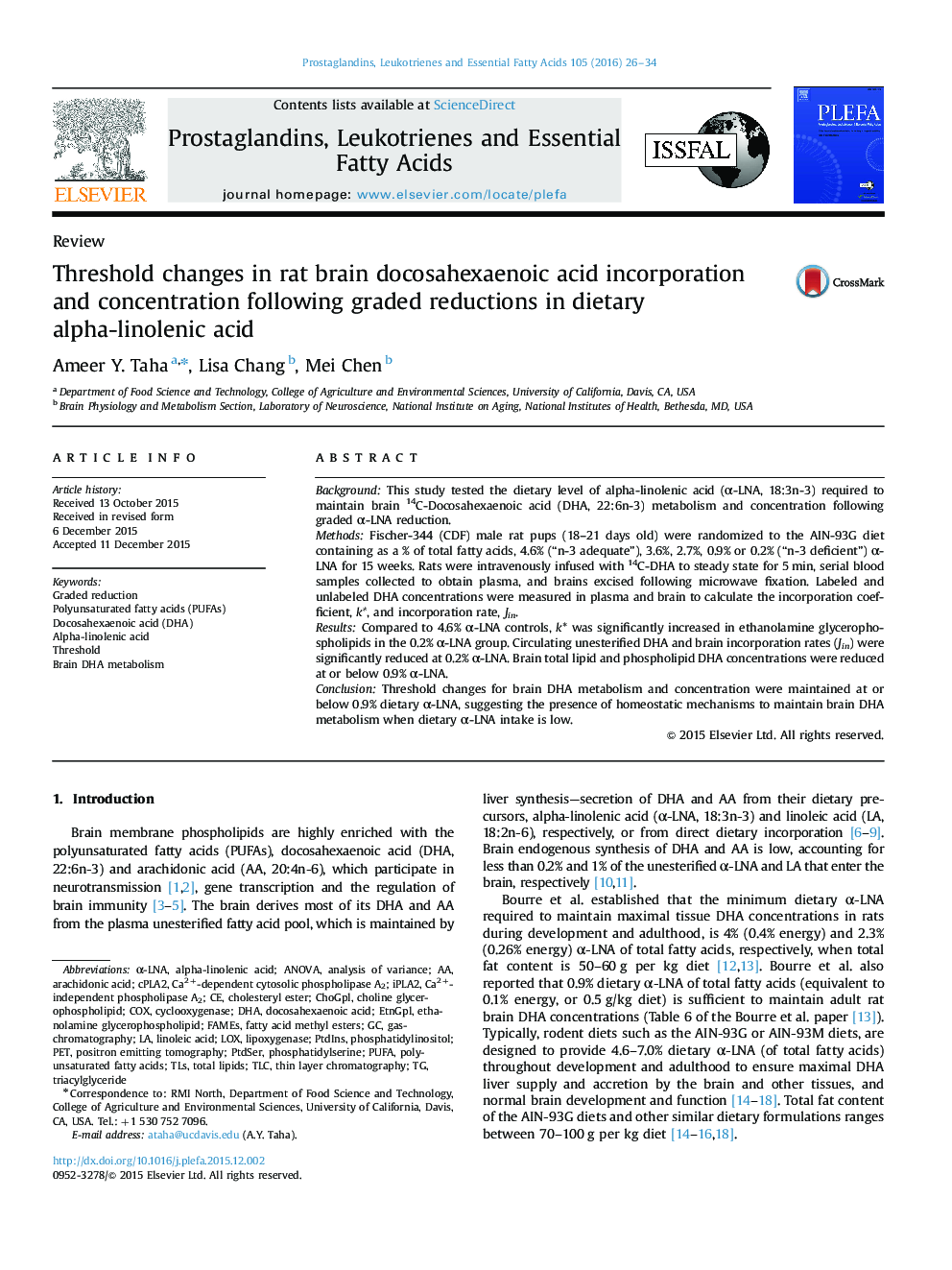| Article ID | Journal | Published Year | Pages | File Type |
|---|---|---|---|---|
| 2777488 | Prostaglandins, Leukotrienes and Essential Fatty Acids (PLEFA) | 2016 | 9 Pages |
BackgroundThis study tested the dietary level of alpha-linolenic acid (α-LNA, 18:3n-3) required to maintain brain 14C-Docosahexaenoic acid (DHA, 22:6n-3) metabolism and concentration following graded α-LNA reduction.MethodsFischer-344 (CDF) male rat pups (18–21 days old) were randomized to the AIN-93G diet containing as a % of total fatty acids, 4.6% (“n-3 adequate”), 3.6%, 2.7%, 0.9% or 0.2% (“n-3 deficient”) α-LNA for 15 weeks. Rats were intravenously infused with 14C-DHA to steady state for 5 min, serial blood samples collected to obtain plasma, and brains excised following microwave fixation. Labeled and unlabeled DHA concentrations were measured in plasma and brain to calculate the incorporation coefficient, k*, and incorporation rate, Jin.ResultsCompared to 4.6% α-LNA controls, k* was significantly increased in ethanolamine glycerophospholipids in the 0.2% α-LNA group. Circulating unesterified DHA and brain incorporation rates (Jin) were significantly reduced at 0.2% α-LNA. Brain total lipid and phospholipid DHA concentrations were reduced at or below 0.9% α-LNA.ConclusionThreshold changes for brain DHA metabolism and concentration were maintained at or below 0.9% dietary α-LNA, suggesting the presence of homeostatic mechanisms to maintain brain DHA metabolism when dietary α-LNA intake is low.
